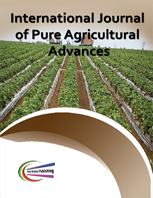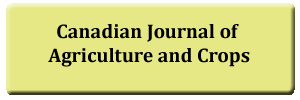Participatory Evaluation of Maize Cultivars under Conservation Agriculture and Conventional Practice for Moisture Deficit Areas of Southern Ethiopia
DOI:
https://doi.org/10.20448/813.11.30.37Keywords:
Participatory varietal selection, Conventional farming practice, Conservation agriculture, Farmers selection criteria, Moisture deficit.Abstract
Maize is the main staple food and the dominant cereal in low moisture stress areas of Boricha and Loka Abaya districts of southern Ethiopia. The objective of this study was to test the adaptability and suitability of improved maize varieties under conservation agriculture (CA) and conventional farming practice (CP) and to recommend for further use by farmers. Seven improved maize varieties of which four were hybrids and the other three were open pollinated (OPV) tested using Participatory Varietal Selection (PVS)in the first year under CP whereas in the second year all the genotypes tested were hybrid varieties in the same districts. In addition, at Hawassa on station in CP, each variety was sown on an area of 22.95 m 2 replicated three times. In the first year under CP, hybrid variety Shala gave the highest yield (3.59 t/ha), followed by the OPV Gibe2 (2.72 t/ha) under farmers’ conditions. In the second year under CA conditions, varieties Shala and SC-403 gave highest yields 3.94 and 3.87 t/ ha, respectively. In researcher managed conditions, varieties Shala, BH-543 and MHQ-138 gave highest yields 9.21, 9.08, 8.81 t/ ha, respectively and ranked from first, second and third under CP. In both seasons variety Shala ranked first in yield under CA and CP which shows the variety’s good stability in favorable and unfavorable years. This variety was also farmers’ first choices in both years and locations based on their evaluation criteria.


